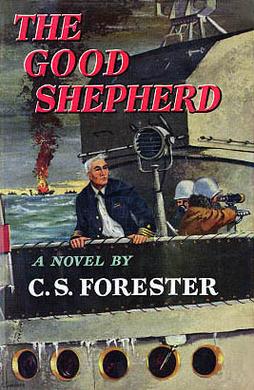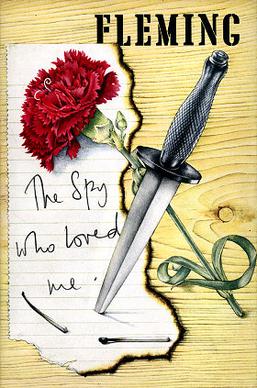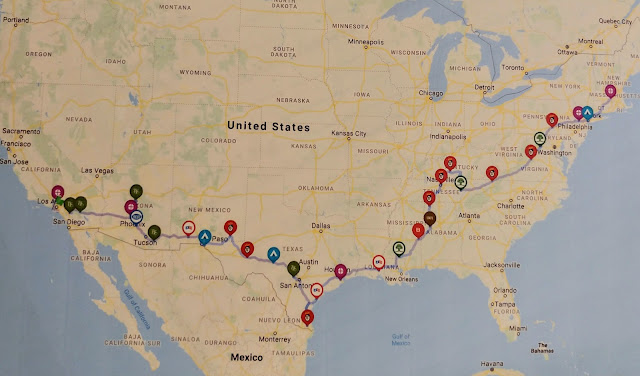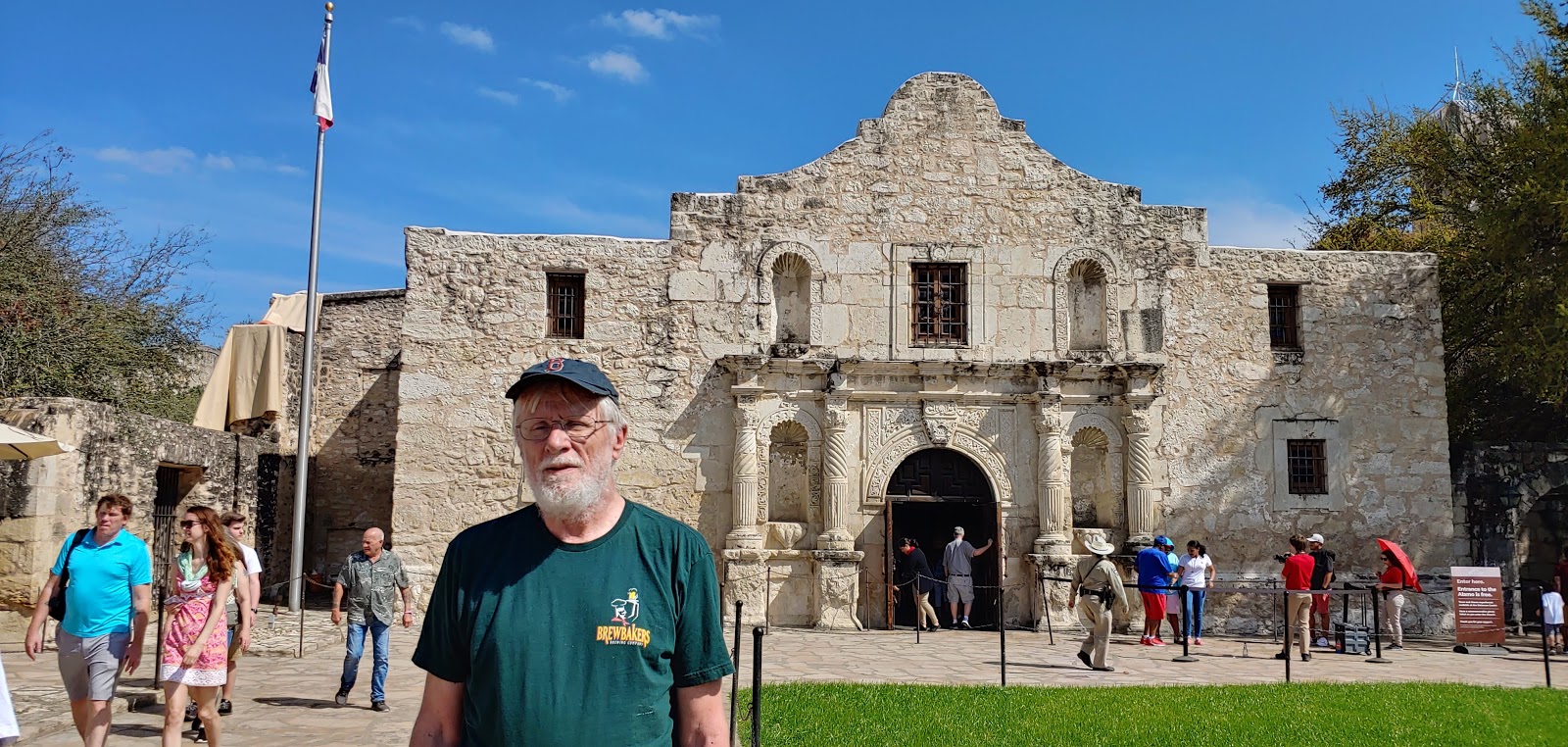When it comes to book movie adaptations, the one that always pops into my mind is Lord of the Rings. Overall I was pretty pleased with it for whatever that is worth. I didn’t miss Tom Bombadil, but I greatly missed the scouring of the Shire. I would actually rate it pretty high. I’ve even got over Jackson making Gimli a comic figure. So what you have there is some great books and some great movies and a quite good adaptation.
For the extremes of adaptation we need to go to less prominent works. There are two books I really appreciated that became movies. And when it comes to film adaptation, I think they illustrate the opposite extremes. The books are The Good Shepherd by C.S. Forester

and The Spy Who Loved Me by Ian Fleming

There are odd circumstances that connect my evaluation of the two adaptations. They are both related to my reaction to what I call the plague. Lately we have been calling it Covid-19, although in the period I am writing about I remember hearing Corona virus a lot.
Sheltering In Place
Evie and I retired from the accounting practice we ran with another couple at the end of 2018. We had acquired an RV and made some short trips in it, but in January 2019 we set off touring in earnest. We have a blog – Peter And Evie Go RVing – about that which is overwhelmingly Evie’s project. We spent the winter and early spring of 2019 touring the southeast. We were back home for the spring and then took off west on July 1. We left the RV on the West Coast and flew home for Thanksgiving and Christmas.
We flew back in mid January 2020 and after some family events and RV maintenance we started touring the southwest and generally heading towards home. Our final stop was going to be Liberty Park in Jersey City which would be a good base for my 50th high school reunion.

Our planned route for 2020 arriving home May 1.
Although I follow the news, my first impression of the severity of the virus came from talking to people in Massachusetts while we were in Texas. One of them suggested that my high school reunion in New York City would be cancelled, which I found preposterous. I remember March 11, 2020 as being the last normal day for us which we spent doing tourist stuff in San Antonio. So when it comes to Covid I guess I will always remember the Alamo.

The reaction to Covid wreaked havoc with our itinerary after that, but it also created a lovely interlude. We spent the month of April 2020 in Lake Lurleen State Park near Tuscaloosa. Typically we spent the morning hiking and the like and went into town in the afternoon to set up somewhere we could use our hotspots. No internet or phone service at the park, which is what led to our engaging with The Spy Who Loved Me.
Walmart
Much as Evie would hate to admit it, Walmart made our trip much easier. That is where I filled my prescriptions. Not having internet at Lake Lurleen we started checking out the movie bin at Walmart. Among other things we bought a bunch of James Bond movies which gave us the chance to compare the various Bonds over the years.
I was particularly looking forward to The Spy Who Loved Me. The lack of internet meant I was reading more books at night. I was able to get the The Spy Who Loved Me (TSWLM) on the kindle when we were in town. (There may be spoilers from here on in) .
Rereading After Half A Century
I read TSWLM when I was 13 or so and remembered it pretty vividly. Because of, you know, the sex. It was not that explicit by contemporary standards and I was a little frustrated because I could not figure out exactly what was going on. TSWLM is unlike any other James Bond novel. It is not a spy story or about some vast conspiracy and James Bond does not appear until quite far in the book,
As the title implies it is a first person narrative by a young woman. It is a sort of coming of age story in which she relates, not that explicitly, but explicitly enough her first sexual experiences, an unfortunate relationship which ends with her being sent to Switzerland for an abortion and her return to Canada. From Canada she decides to go on a road trip in the United States.
She takes a job for a couple of weeks shutting down a seasonal hotel in upstate New York. She is actually a pawn in an insurance scheme. Two thugs are going to burn down the motel with her in it on the last night that she is there. Things look awful grim. Fortunately James Bond’s car breaks down and he needs a place to stay for the night. You can pretty much figure it out from there.
The most interesting thing that I remembered from the book was the talking to that a police captain who was cleaning things up gave to the young woman more or less warning her to not fall for guys like James Bond.
‘This underground war I was talking about, this crime battle trained armies, one fighting on the side of law and of what his own country thinks is right, and one belonging to the enemies of these things.’ that’s always going on – whether it’s being fought between cops and robbers or between spies and counter-spies. This is a private battle between two trained armies, one fighting on the side of law and of what his own country thinks is right, and one belonging to the enemies of these things. ‘But in the higher ranks of these forces, among the toughest of the professionals, there’s a deadly quality in the persons involved which is common to both – to both friends and enemies.’.
‘The top gangsters, the top F.B.I. operatives, the top spies and the top counter-spies are cold-hearted, cold-blooded, ruthless, tough, killers, Miss Michel. Yes, even the “friends” as opposed to the “enemies”. They have to be. They wouldn’t survive if they weren’t. Do you get me?’
‘So the message I want to leave with you, my dear – and I’ve talked with Washington and I’ve learned something about Commander Bond’s outstanding record in his particular line of business – is this. Keep away from all these men. They are not for you, whether they’re called James Bond or Sluggsy Morant.
And The Movie
I was really looking forward to watching the movie. Given the viewpoint I thought it would be unique among Bond movies. The film came out in 1977 with Roger Moore as James Bond. It totally passed me by. Back then to the extent I thought about Bond movies it was that if it wasn’t Sean Connery then it wasn’t James Bond.
Talk about a huge disappointment. You can pretty much see what happened from the trailer.
Here is the opening scene
Here is the explanation from Wikipedia.
The film takes its title from Ian Fleming‘s 1962 novel The Spy Who Loved Me, the tenth book in the James Bond series, though it does not contain any elements of the novel’s plot. The storyline involves a reclusive megalomaniac named Karl Stromberg, who plans to destroy the world and create a new civilisation under the sea. Bond teams up with a Soviet agent, Anya Amasova, to stop the plans, all while being hunted by Stromberg’s powerful henchman, Jaws. (Emphasis added)
What Happened?
TSWLM was a James Bond novel unlike any other. So people who liked James Bond stories, of which there had been nine by then, did not like it so much. Here is a brief review from Newsday (Suffolk Edition) Melville NY
So Ian Fleming pretty much disowned it. Apparently it was at his insistence that no part of the plot be included in the movie by that title, which I guess they did not want to waste since it was such a neat title. I guess they didn’t worry about laying a trap for me over 40 years later as I decided to fill in a gap.
Arguably you could say that this adaptation was a total success in that the goal was to have a movie with the same title that was not at all like the book other than having James Bond in it. Still, I wish somebody would make a movie or even a mini-series actually based on the book some day.
The One That Really Worked
The other great film adaptation story that begins for me at Lake Lurleen is The Good Shepherd. I had been waiting excitedly for the upcoming Tom Hanks movie about the Battle of the Atlantic. I was planning to see it on the big screen when it was released in June either with a friend of mine or my brother or maybe both. Having more reading time I decided to read the book. The movie, by the way, is called Greyhound. I assume that is because there was a spy movie called The Good Shepherd released in 2006 starring Matt Damon.
Anyway I decided it would be worth my time to read the book the film was based on. I thought it was fantastic. It is not a very long book. I think by now I have read it four times. Two of the Amazon review will summarize why you will either like it or not:
I first read this book in 1967. It made a profound impression on me. I’ve just now reread it for the fifth or sixth time. The story is a marvelous synergy of an extended character study and an accurate, detailed tale of not-so-glorious naval warfare — convoy escort duty. Here is a three-dimensional picture of realistic American military professionalism, including unshakable steadfastness, amazing endurance, deep competence, and an understated but immensely powerful commitment to the country and to political freedom
And
Very realistic portrayal of convoy commanders responsibility during WWII. Story was interesting, but it was written to the point that it was tedious. Every detail down to bathroom breaks were faithfully reported. Found the book was laborious to read.
There are three chapters. Chapter One and Three are a sort of introduction and epilogue respectively. Chapter Two is divided into watches – the four hour periods that make up a ship’s day. It begins during the Wednesday Forenoon watch 0800 -1200 and ends during the Friday Forenoon Watch 0800-1200. During parts of those two watches and the 11 intervening watches we are pretty much inside the head of Commander George Krause USN. Krause commands a Mahan class destroyer. He also in overall command of the escort group which includes three other ships one Polish, one Canadian and one British. They are escorting 37 merchant ships.
It is the winter of 1942 and they are entering the “air gap”, the part of the Atlantic that then was not subject to air cover. Krause will be pretty much on his feet and active for over 48 hours. We get the background of his various decisions in which he has to consider the needs of his crew and ship, the other escorts and the merchant ships. Unlike a story like the Enemy Below in which a destroyer and a sub try to outwit one another, Krause’s mission is to get the merchant ships across safely.
Krause is deeply religious and very hard on himself. We get the back story of his career frustrations and his difficult marriage and divorce through his ruminations. And a lot more about how he is relating to the other escort skippers who have more combat experience than he does. As it happens he has none. And there is the thinking behind how he relates to each of the crew that he encounters.
I thought the book was great. And I despaired of it being translated to the screen, but they actually managed it quite well. There were some minor modifications. For example they give a little more prominence to the mess attendant who in the book is Filipino, but African American in the film. It helps convey the devout attitude. Someone has taken the trouble of compiling the food scenes. Hopefully they will stay up on youtube.
The communication among the ships which goes either through TBS radio or signal lamps is fraught with meaning that Forrester can explain. The ending when they are finally through the air gap and relieved by another escort group is an illustration of that.
Krause looked again at the convoy and back at the three ships aft. Was it sentimental to want to be at the head of his command when the reinforcements arrived? “Pardon me, sir,” said the messenger, putting hot coffee on the tray in front of him. “Get me a signal pad and pencil,” said Krause.
He wrote out the message. COMESCORT TO SHIPS ASTERN. RESUME STATIONS IN CONVOY. “Signal bridge,” he ordered. “And tell them to send slowly.” “Aye aye, sir.” “The T.B.S., sir,” said Carling. It was James. “The Catalina’s crossing our course at thirty-five miles, sir. Looks as if the escort group isn’t far ahead. Thought you’d like to know, sir.” “I sure would. Thanks a lot,” said Krause. He was on the way back to his coffee when the messenger saluted him. “Ships astern acknowledge message, sir.”
“Very well.” Lieutenant Commander Ipsen up from the engine room with his written fuel report. Enough for fifty-seven hours’ steaming at economical speeds. Enough. “Thank you, Chief. Very well.” “Thank you, sir.” Ahead of him the convoy was practically in good order. He could go ahead up a lane in safety. “I’ll take the conn, Mr. Carling.” “Aye aye, sir.” Keeling drew away from the ships astern and entered the lane. Ships all round him. Battered ships and nearly new ships, with every color of paintwork and every style of build. There had been thirty-seven ships when he had taken over escort duty. Now there were thirty; seven had been lost. Heavy losses, no doubt, but convoys had known even heavier than that. He had brought thirty ships through. Out of his escort force he had lost a destroyer; a very grave loss indeed. But he had sunk two probables and a possible. Thou art weighed in the balance—in the balance—He came to himself with a start. While having the conn, while actually in charge of the ship, he had gone to sleep on his feet, here in a convoy lane with danger all round. While I was musing the fire burned. He had never before known such fatigue. Coffee might help. It was only then that he remembered the pot that had been brought him. It was nearly cold, but he drank it, draining the second cup as they emerged ahead of the convoy.
……………………………………………………………………………….
“Well, we’ve made it, sir,” said Cole beside him. “We have,” answered Krause. He was aware of a dryness of the throat that affected his voice. The messenger came running. SNO TO COMESCORT. WELCOME. KINDLY MAKE VERBAL REPORT TO DIAMOND.
There followed a wave frequency. Krause handed the message pad to Cole and walked over to the T.B.S. It was not easy to walk so far. “George to Diamond. Do you hear me?” “Diamond to George. I hear you.” Another of those English voices. “Afraid you’ve had a rough time.” “Not so rough, sir. We’ve lost seven ships out of the convoy and two slightly damaged.” “Only seven?” “Yes, sir. King’s Langley, Henrietta—” “It doesn’t matter about the names at present.” It was a relief to hear that; it was only with an effort that he could recollect them. “We’ve lost Eagle too, sir.” “Eagle? That’s bad luck.”.
———————————————————————————————————————————
” “Sir,” said Krause, goading his mind to think of the right words. “This is George. Submit I stay with the convoy. I’ve fuel to spare.”
“No, I’m afraid not,” said Diamond. “I want you to see these two boys get home all right. They’re not fit to be out by themselves.” It was said lightly, but there was a positive quality about the words; Krause felt it in the same way as, when his blade slipped along an opponent’s foil, his wrist would feel the transition from foible to forte. “Aye aye, sir,” he said. “Form on the left flank of the convoy,” said Diamond. “I’ll come in on the right.” “Aye aye, sir.” “You’ve done the hell of a good job, Captain,” said Diamond. “We were all worried about you.” “Thank you, sir,” said Krause. “Good-by and good luck,” said Diamond.
Along with his fatigue the blackest depression was settling on him. Something was over, finished. Those last heartening words of Diamond’s might be very gratifying. It was obvious that by bringing his charge within touch of England, and handing it over to the relieving force, he had completed the duty entrusted to him. I have fought a good fight, I have finished my course. Could he say that? Perhaps. Yet this unutterable sadness possessed him, even while he mechanically gave the orders that carried him away from the ships he had guarded so long. He looked back at them. There was a long, long war ahead of him, he knew.
He would fight, he would know agony and danger, but even if he lived he would be unlikely ever to set eyes on those ships again. He had a last duty to fulfill, a final step to take for the sake of international accord. “Messenger! Signal pad and pencil.” He hesitated over the first word. But he would use it once more during these last seconds. COMESCORT TO COMCONVOY. GOODBY. MOST GRATEFUL THANKS FOR YOUR SPLENDID CO-OPERATION. GODSPEED AND GOOD LUCK. “Signal bridge,” he said. “Come right to course zero eight seven, Mr. Carling.” He heard the quartermaster repeat Carling’s order.
The commodore was winking back at him now. He fought back his fatigue again and waited. The messenger brought the signal pad. COMCONVOY TO COMESCORT. IT IS FOR US TO THANK YOU FOR YOUR MAGNIFICENT WORK. DEEPEST GRATITUDE FROM US ALL. HEARTIEST GOOD WISHES. That was all for now. It was finished. “Very well,” he said to the messenger. “Mr. Carling, I’ll be in the cabin if you want me.” “Aye aye, sir.” Charlie Cole was standing eying him closely, but he had not the strength even to exchange a word with him. A little sleep, a little slumber, a little folding of the hands to sleep. Blindly he found his way to the cabin.
How much of that can you get across on the screen and how do you have to change it to do so? It is actually done pretty well as you can see including the Chapter 3 epilogue.
After reading The Good Shepherd, I really thought it would be impossible to translate to the screen, but they actually did quite a good job. They change the romantic back story and cannot bring out a lot about Krause’s past, but the basic elements of the problems that he faces in command and his essential character come across very will. I really see why Tom Hanks wanted to do this film so much.
Sadly I never got to see the film on the big screen. Due to the continuation of the plague it was released direct to Apple in the summer of 2020.
































































































Peter, I just finished reading your fabulous essay here. I was amazed (but in another sense hardly surprised) that you read THE SPY WHO LOVED ME at age 13!!! Geez!!! I read only two of the James Bond novels, GOLDFINGER and THUNDERBALL, and AFTER I had seen the films. I remember enjoying both about as much as the films. As to THE SPY WHO LOVED ME, I did find the film quite entertaining, but in accordance with your findings, am sorry that the novel wasn’t better fleshed out. We are in FULL AGREEMENT on THE GOOD SHEPARD as a film -and I concur Hanks was excellent- but unfortunately I did not read the novel. I musty hand it to you and Evie for the extensive traveling, which nicely compliments the thrust of your writing here! And for the co-ran blog! Fantastic captures as well!
I was just eyeing The Good Shepherd on my bookshelf this last week and thinking about reading it again. I’ve got to see that movie!
I don’t think I would have appreciated the film nearly as much without reading the book. The book is a pretty fast read. I imagine someone who was compulsive trying to figure out all the maneuvers but that kind of just passes me by.